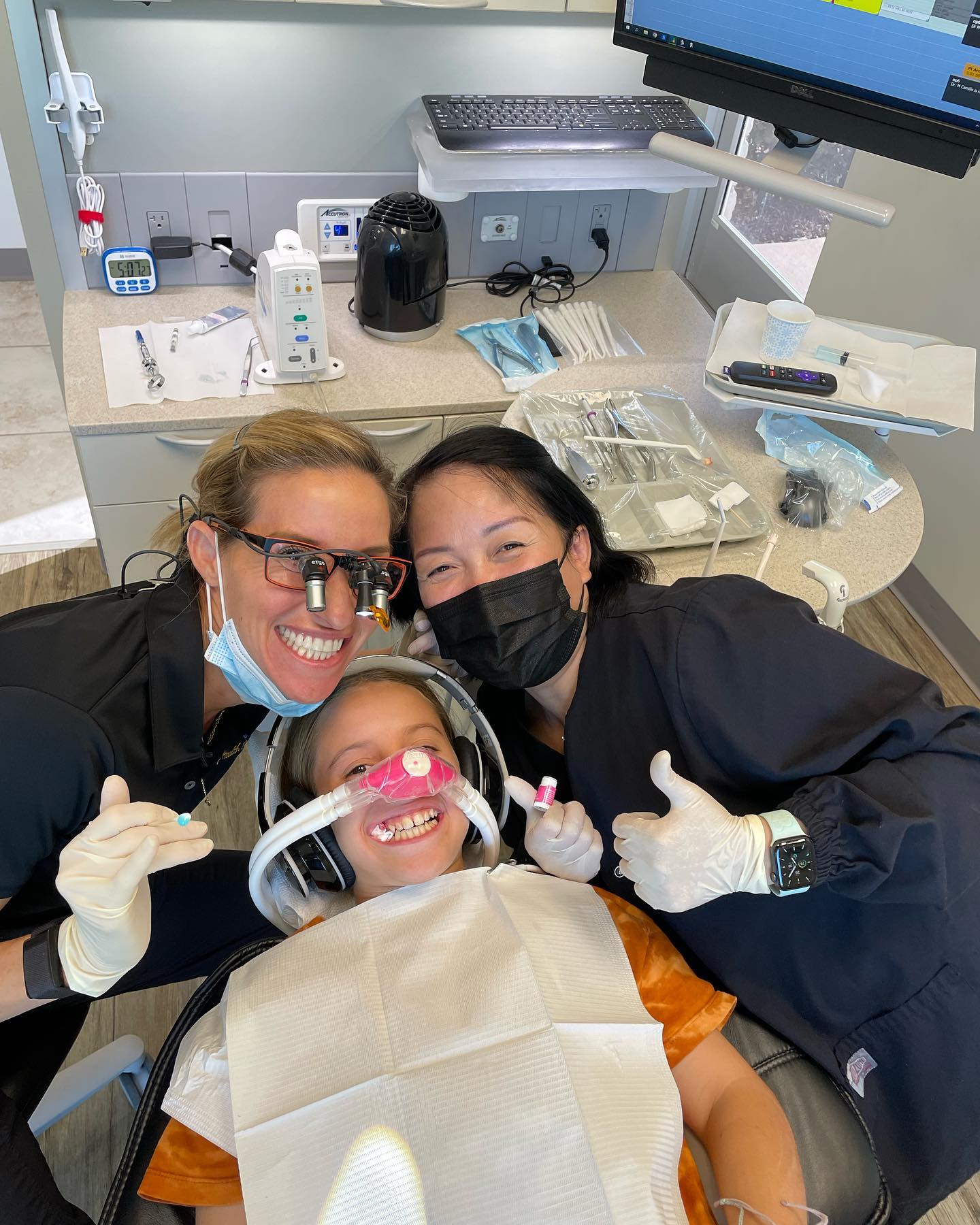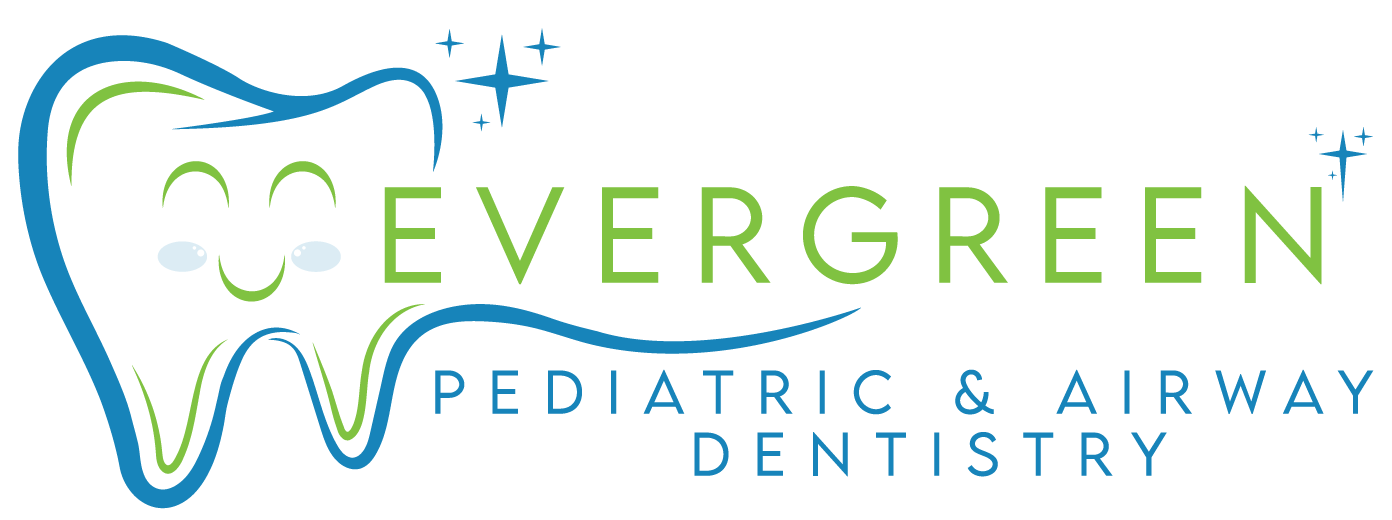Airway Dentistry 101: How It Can Improve Your Breathing and Overall Health
If you’ve never heard of airway dentistry before, you’re not alone. It’s a relatively new field that’s gaining traction for its profound impact on children’s health. At its core, airway dentistry focuses on identifying and treating airway obstructions to improve breathing, and subsequently, overall health. This blog will cover the essentials of airway dentistry 101 and explain why it’s crucial for your child’s well-being.
Understanding Airway Obstruction
Airway obstruction in children can have a variety of causes and consequences. It can affect not only their breathing but also their growth, sleep quality, and even academic performance. When a child’s airway is blocked or narrowed, they may struggle to get enough oxygen, leading to a range of health problems.
- Causes of Airway Obstruction: Airway obstruction can result from several factors, including enlarged tonsils, swollen adenoids, and anatomical abnormalities. Allergies, respiratory infections, and chronic conditions like asthma can also contribute to airway blockages.
- Impact on Overall Health: When kids can’t breathe properly, it can affect their sleep, which in turn impacts their mood, energy levels, and ability to concentrate. Poor breathing can also lead to mouth breathing, which has been linked to dental issues, speech problems, and even changes in facial structure.
- Breathing and Development: Proper breathing is essential for a child’s development. When airway obstructions are left untreated, they can hinder physical and cognitive development. That’s why early intervention through airway dentistry can make a significant difference.

Airway Dentistry
Signs and Symptoms of Airway Issues in Children
Identifying the signs and symptoms of airway issues in children is the first step toward effective treatment. Some of the common indicators that your child might be experiencing airway problems include:
- Snoring: Frequent snoring can be an indication of partial airway obstruction. It’s one of the most noticeable signs that should not be ignored.
- Mouth Breathing: If your child often breathes through their mouth, particularly during sleep, it may indicate an issue with their nasal airway.
- Restless Sleep: Difficulty staying asleep, frequent waking, or tossing and turning during the night can all be signs of compromised breathing.
- Daytime Sleepiness: Excessive sleepiness during the day, despite getting a seemingly adequate amount of sleep, might point to disrupted sleep quality due to breathing issues.
- Behavioral Problems: Irritability, hyperactivity, and difficulty concentrating are often linked to poor quality sleep and oxygen deprivation.
- Chronic Ear Infections: Recurring ear infections can sometimes be related to airway obstructions affecting the Eustachian tubes.
- Dental and Facial Abnormalities: Crooked teeth, a high-arched palate, or a receding chin can sometimes be indicators of long-term airway issues and mouth breathing.
- Difficulty Swallowing: Struggling with swallowing food or frequent choking can suggest airway problems related to enlarged tonsils or adenoids.
Understanding these signs can help parents seek timely medical advice, allowing for early intervention and treatment that can significantly improve their child’s quality of life.
The Role of Airway Dentistry in Improving Breathing
Airway dentistry plays a crucial role in diagnosing and treating airway obstructions to promote optimal breathing. By addressing structural issues within the oral and nasal cavities, airway dentistry aims to enhance airflow and ensure children receive adequate oxygenation. One of the primary techniques used is the expansion of the palate through orthodontic appliances, which can widen the airway and reduce blockages. Additionally, airway dentists may recommend removing enlarged tonsils or adenoids if they are contributing to the obstruction.
Beyond structural interventions, airway dentistry focuses on guiding proper oral habits. This includes encouraging nasal breathing over mouth breathing, which supports better jaw development and reduces the risk of future dental problems. Myofunctional therapy, which involves exercises to strengthen the tongue and facial muscles, can also be employed to help maintain an open airway.
Early evaluations and treatments conducted by airway dentists can prevent long-term complications such as sleep apnea, jaw misalignment, and chronic respiratory issues. By improving breathing during critical developmental stages, airway dentistry not only enhances a child’s physical health but also aids in better cognitive and emotional development. Ultimately, the work of airway dentists is essential in ensuring children lead healthier, more active lives with fewer respiratory and dental concerns.

Airway Dentistry
Benefits of Early Intervention
Early intervention in airway dentistry can lead to numerous benefits for children, setting the stage for healthier development throughout their lives. By addressing airway obstructions promptly, parents can prevent the escalation of potentially serious health issues. Here are some key benefits of early intervention:
- Enhanced Sleep Quality: Treating airway obstructions at an early age can significantly improve sleep quality, ensuring that children get the restorative sleep they need for growth and development. This leads to better mood regulation, increased cognitive function, and higher energy levels during the day.
- Improved Academic Performance: With better sleep and oxygenation, children are more likely to perform well in school. Enhanced concentration, memory retention, and overall cognitive abilities are often observed following early airway treatment.
- Optimal Facial and Dental Development: Early intervention helps in guiding proper jaw growth and dental alignment, reducing the likelihood of needing extensive orthodontic work in the future. Addressing mouth breathing and tongue posture can lead to a more balanced facial structure.
- Reduction in Behavioural Issues: Addressing breathing problems can lead to a noticeable decrease in irritability, hyperactivity, and other behavioral issues often linked to poor sleep and oxygen deprivation.
- Lower Risk of Chronic Health Problems: By ensuring proper breathing from a young age, the risk of developing chronic conditions such as sleep apnea, asthma, and respiratory infections can be reduced. This sets a foundation for better long-term health.
- Emotional and Social Well-being: Improved sleep and health contribute to a child’s emotional and social well-being. Children who sleep well and breathe easily are generally happier, more sociable, and better equipped to handle stress.
Overall, early intervention in airway dentistry is a proactive approach that can lead to a multitude of benefits, ensuring children develop healthily and thrive in various aspects of their lives. Parents are encouraged to seek evaluations if they notice any potential signs of airway obstructions in their children, as timely treatment can make a significant difference.
Treatment Options for Airway Obstruction
There are several effective treatment options for airway obstruction, tailored to address the specific needs of each child. These treatments not only focus on alleviating the immediate obstruction but also aim to support proper development and long-term health.
- Palatal Expanders: These orthodontic devices are designed to widen the upper jaw, creating more space in the nasal passages and oral cavity. This can help reduce blockages and promote better airflow, ultimately improving breathing during sleep and daily activities.
- Myofunctional Therapy: This type of therapy involves exercises to strengthen the muscles of the tongue and face. By improving muscle tone and function, myofunctional therapy can help maintain an open airway and encourage nasal breathing over mouth breathing.
- Tonsil and Adenoid Removal: For some children, enlarged tonsils or adenoids can significantly obstruct the airway. Surgical removal of these structures, known as a tonsillectomy or adenoidectomy, can provide relief from chronic airway obstruction and related symptoms like snoring and sleep apnea.
- Continuous Positive Airway Pressure (CPAP): In cases of severe sleep apnea, a CPAP machine may be recommended. This device delivers a steady stream of air through a mask, keeping the airway open during sleep and preventing disruptions in breathing.
- Lifestyle and Environmental Modifications: Ensuring a healthy environment and lifestyle can support overall airway health. This includes managing allergies, avoiding exposure to smoke and pollutants, and encouraging physical activity to maintain a healthy weight.
- Orthodontic Appliances: In addition to palatal expanders, other orthodontic appliances such as braces or aligners may be used to correct dental misalignments that contribute to airway obstruction. Proper alignment of the teeth and jaws can enhance the airway space and facilitate better breathing.
- Medications: In some cases, medications may be prescribed to manage conditions like allergies or sinusitis that contribute to airway obstruction. These medications can help reduce inflammation, control symptoms, and improve airflow.
Each treatment option is considered based on the individual child’s condition, and a multidisciplinary approach involving pediatricians, ENT specialists, and airway dentists is often necessary to achieve the best outcomes. Early diagnosis and intervention remain key factors in successfully managing airway obstructions and ensuring overall well-being.

Airway Obstruction Treatment
How to Find an Airway Dentist for Your Child
Finding the right airway dentist for your child is crucial to ensuring they receive the best possible care for their specific needs. Here are some steps to help you locate a qualified and experienced airway dentist:
- Ask for Referrals: Begin by asking your child’s pediatrician, family dentist, or orthodontist for referrals. They can recommend airway dentists who specialize in treating pediatric patients. Additionally, talking to other parents who have gone through similar experiences can provide valuable insights and recommendations.
- Research Credentials and Experience: When considering potential airway dentists, take the time to research their credentials and experience. Look for dentists who have undergone specialized training in airway management and pediatric dentistry. Membership in professional organizations, such as the American Academy of Dental Sleep Medicine (AADSM) or the American Academy of Pediatric Dentistry (AAPD), can also indicate a commitment to ongoing education and excellence in this field.
- Check Online Reviews and Testimonials: Online platforms such as Google, Yelp, and healthcare-specific review sites can provide reviews and testimonials from other parents about their experiences with different airway dentists. While individual reviews should be taken with a grain of caution, overall ratings and common themes can help you get a sense of a dentist’s reputation.
- Evaluate Communication and Approach: Schedule a consultation with potential airway dentists to assess their communication skills and approach to treatment. A good airway dentist should take the time to explain the diagnosis, treatment options, and expected outcomes clearly and compassionately. They should also be open to answering any questions you and your child may have.
- Consider the Clinic Environment: Visit the dental clinic to ensure it provides a child-friendly environment. A welcoming and comfortable setting can help alleviate any anxiety your child may have about treatment. The presence of a supportive staff and modern equipment is also a positive indicator of a well-run practice.
- Insurance and Payment Options: Check whether the airway dentist accepts your insurance plan and inquire about payment options. Understanding the costs associated with treatment and the availability of financing plans can help you make an informed decision without unexpected financial stress.
- Multidisciplinary Collaboration: An effective airway dentist should be willing to work closely with other healthcare professionals, such as pediatricians, ENT specialists, and myofunctional therapists, to ensure a comprehensive and coordinated approach to your child’s care. Ask about their experience with multidisciplinary collaboration.
Taking these steps will help you find a qualified airway dentist who can provide the specialized care your child needs to achieve optimal respiratory and dental health. Early intervention and appropriate treatment can set the foundation for a healthier future for your child.
Preventative Measures to Promote Healthy Breathing in Children
In addition to seeking professional dentist help when your child is experiencing airway obstruction, there are also steps you can take at home to promote healthy breathing and prevent potential issues. These include:
- Encouraging Nasal Breathing: Encourage your child to breathe through their nose rather than their mouth. Nasal breathing promotes better airflow, reduces the risk of respiratory infections, and helps develop proper facial structure.
- Monitoring Sleep Habits: Pay attention to your child’s sleep patterns and habits. If they snore or regularly experience difficulties sleeping, it may be a sign of an underlying airway issue that requires attention.
- Maintaining a Healthy Diet: A balanced and nutritious diet can support overall health, including proper airway development. Limiting processed foods and sugary drinks can reduce the risk of developing conditions such as obesity, which can contribute to airway obstruction.
- Encouraging Physical Activity: Regular physical activity not only promotes a healthy weight but also strengthens muscles involved in breathing. Encourage your child to engage in activities that promote good posture and proper breathing techniques, such as swimming or yoga.
By implementing these measures and seeking professional guidance when necessary, you can help ensure your child’s respiratory health is well-supported.
Conclusion
Airway obstruction in children can have serious consequences if left untreated. Seeking early diagnosis and intervention from a qualified airway dentist is crucial to managing these conditions and promoting overall well-being. By following the steps outlined above and taking preventative measures at home, you can help ensure your child receives the best possible care for healthy breathing. Remember to consult with your child’s healthcare provider for personalized recommendations and advice tailored to their specific needs. So, make sure to prioritize your child’s respiratory health and seek professional help when necessary for an optimal future ahead!
Evergreen Pediatric Dentistry
https://www.google.com/maps?cid=14720788683151219551
12910 Totem Lake Blvd NE #103, Kirkland, WA 98034, United States
(425) 814-3196
https://evergreenkidsdentist.com/


